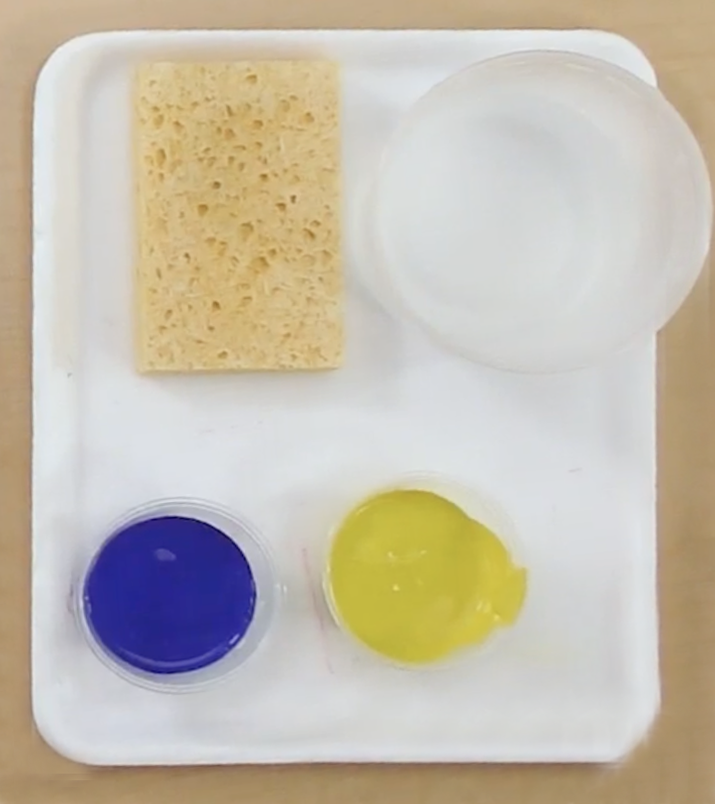Overview
Children will explore mixing blue, yellow, and white to make different greens. Children can mix the different greens they notice on a plant.
Materials
- Blue, yellow, and white tempera paint
- Cup of water
- Paintbrush
- Sponges
- Paper
- Optional: Plant

Activities
What colors can we mix using blue, yellow, and white? Let’s find out. First, get your brush ready to paint. If it’s comfortable, hold it in the middle with your fingers on one side and thumb on the other.

You’re ready to paint! Start by dipping your brush in the yellow paint. Not too much, just the tip. Then, paint some yellow on your paper.

Let’s add some blue! Before you dip your brush in the blue, let’s clean it.
- Dip your brush in the water and gently swish it on the bottom. “One, two, three, stop!”
- Then, gently tap it on the sponge to dry.
Now you can add some blue next to the yellow. What happens when they meet? They make green!

Look at the green that you made. Is it light or dark?
How do you think you can make a lighter green? Should you add more blue or more yellow?
How can you make a darker green?

What happens if you add white to one of the greens?

Once you’ve explored mixing different greens, you can explore mixing the greens that you see on a plant. Look closely. What kind of greens do you see? How can you mix each one?

Reflection
Let’s look at your painting.
- What kinds of green did you make?
- How did you make them?
Extensions
Try mixing green with crayons, watercolors, or oil pastels.
What different kinds of green can you make with each?
Try mixing the colors you see on other plants.
Find another plant in your home. What colors do you notice? How can you mix the different colors that you see?
Video
Credits
Written By:
Andrea Burgay, Director of Digital Learning
Lesson Development:
Julie Applebaum, Senior Director
Sassy Kohlmeyer, Director of Early Childhood Programs
Copyright © 2024 Studio in a School NYC LLC
